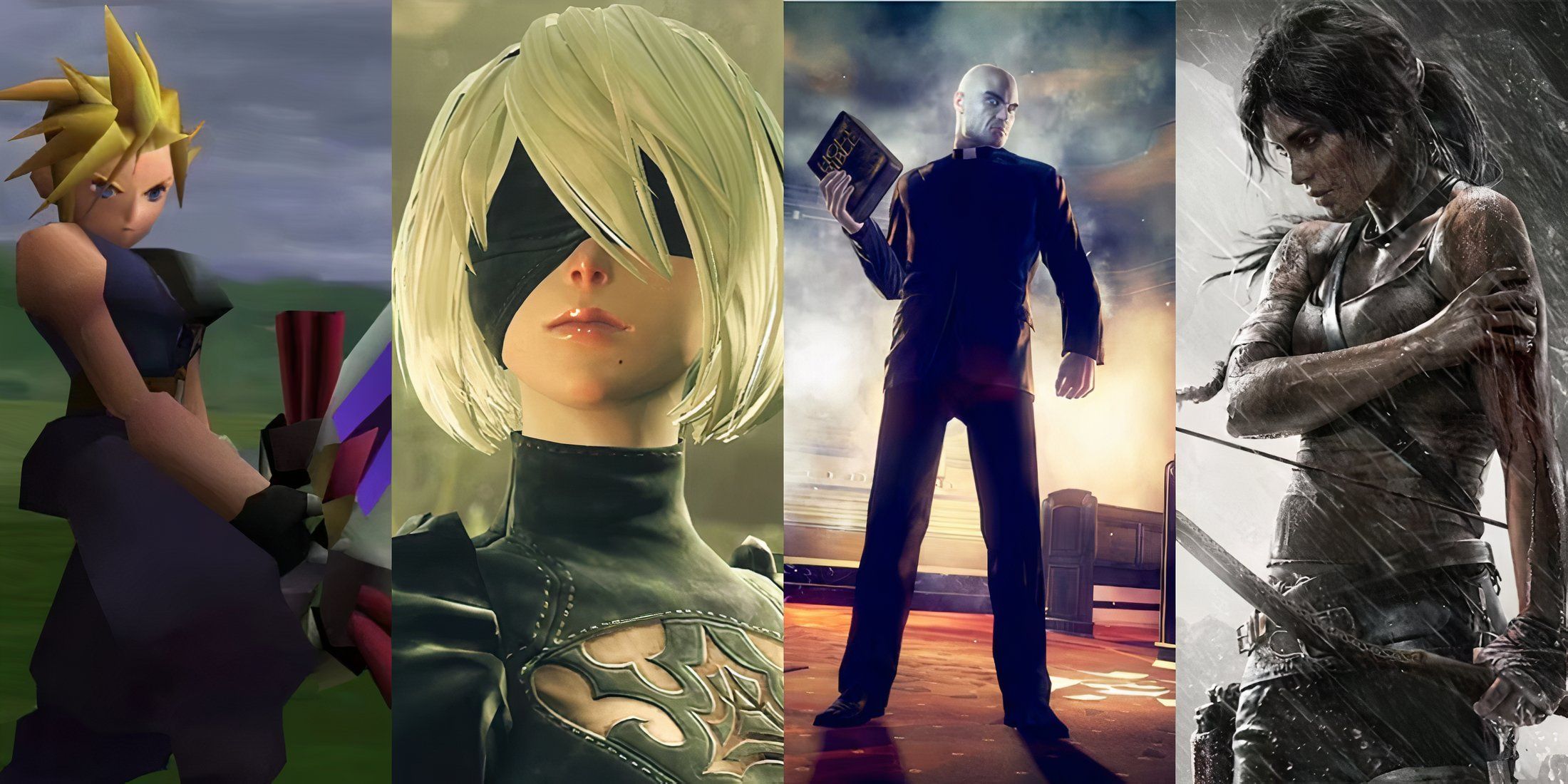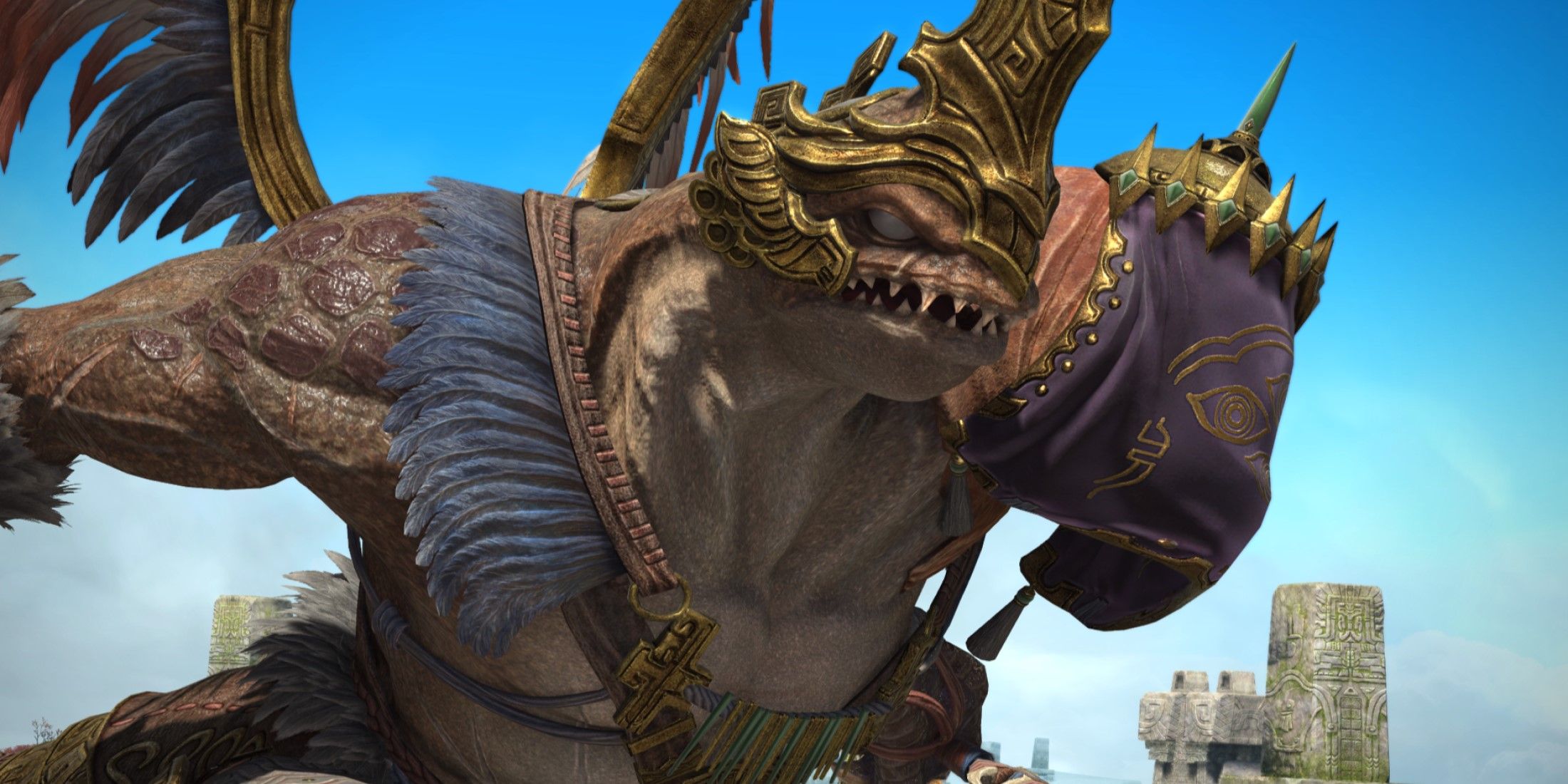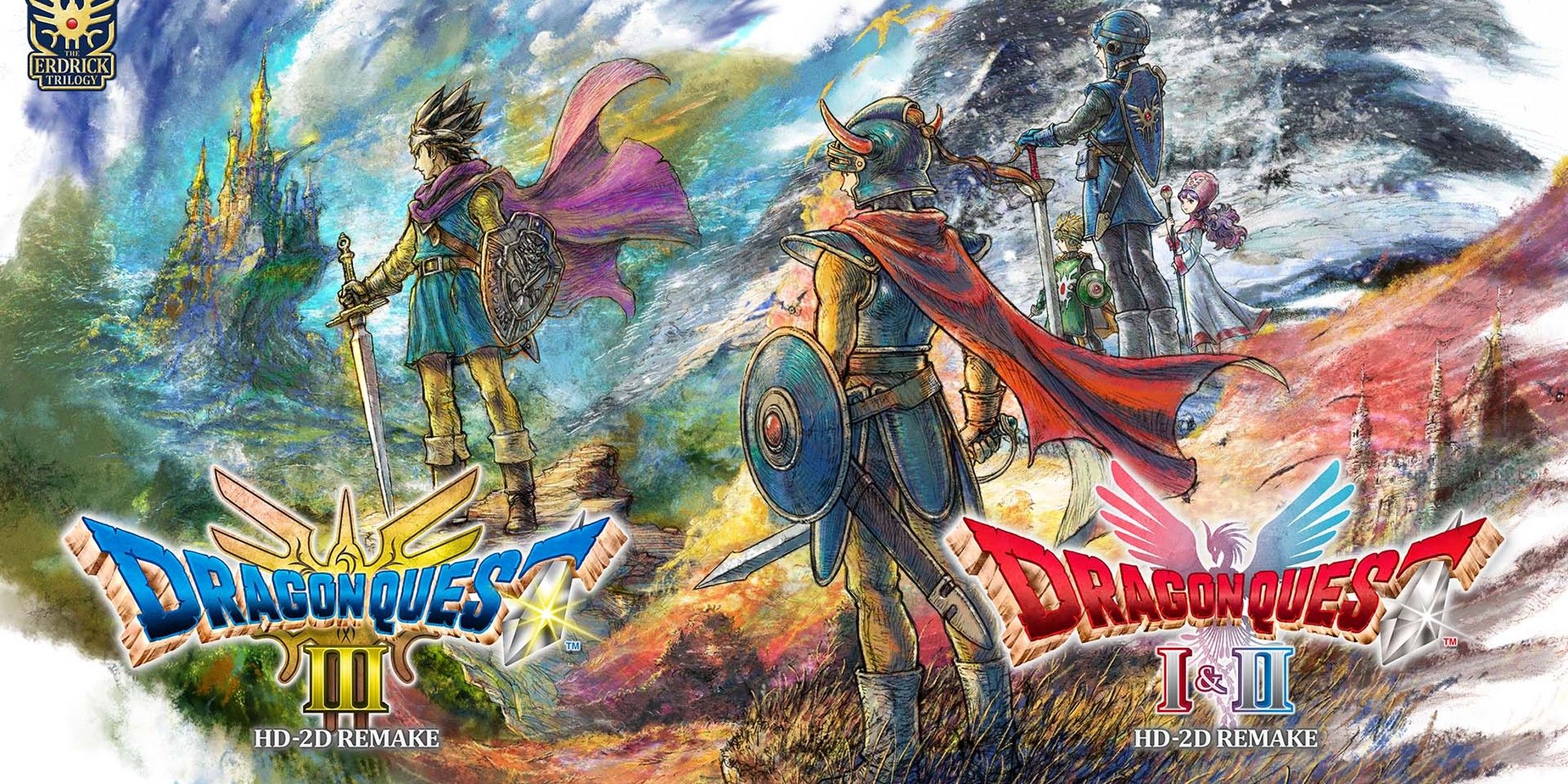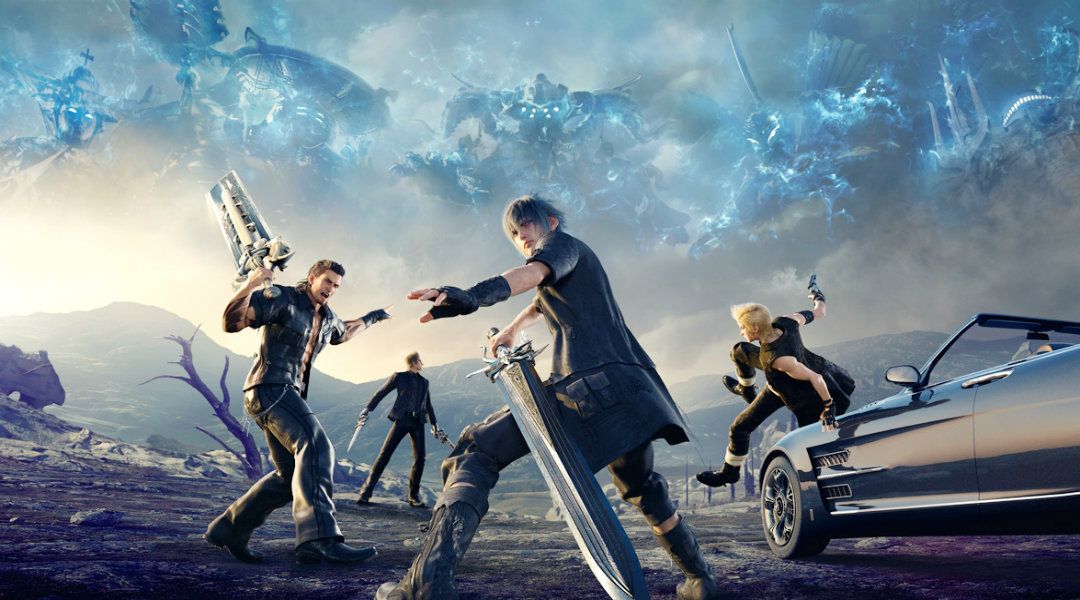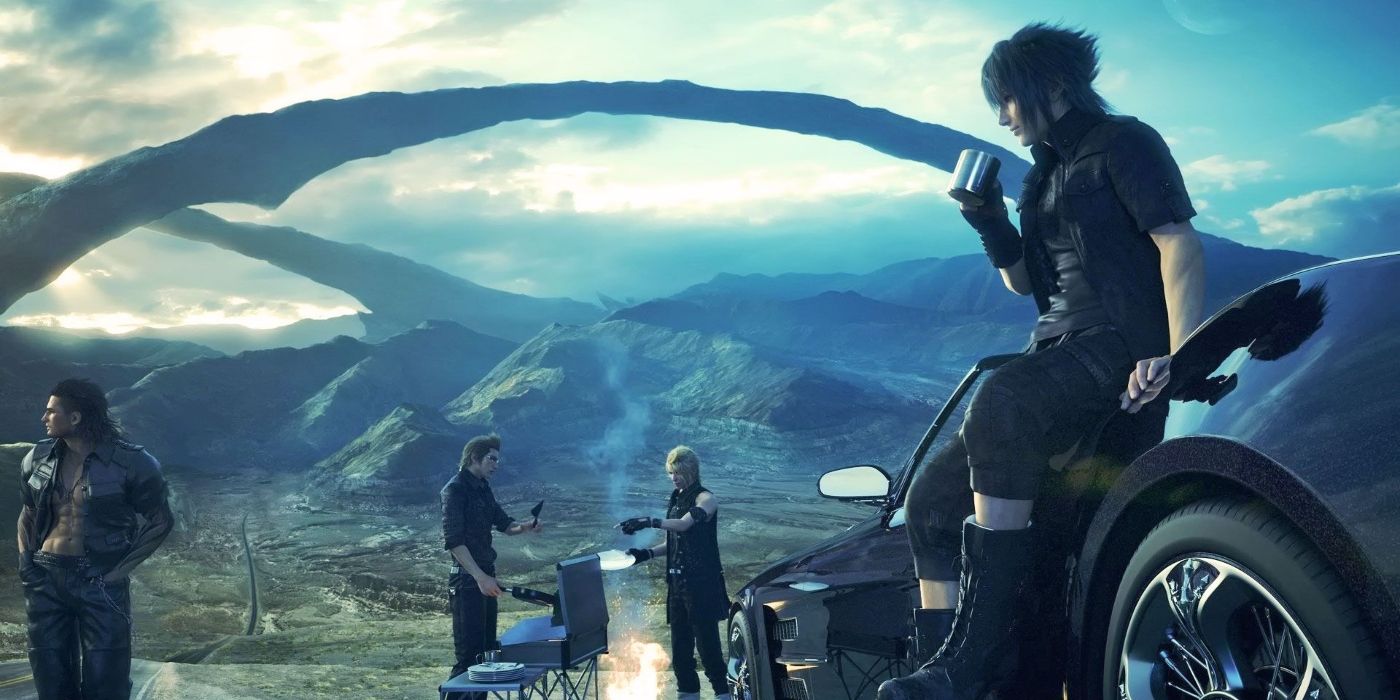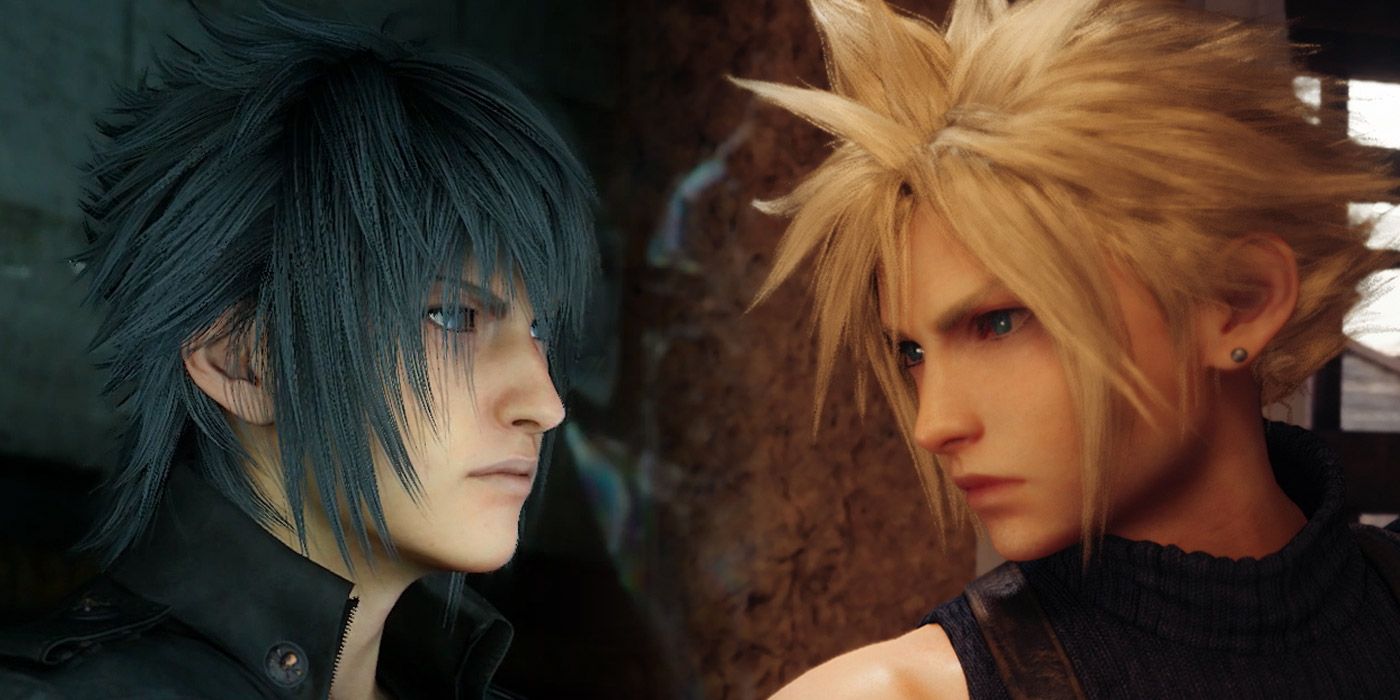Beginning its life as an entry in the Fabula Nova Crystallis subseries, Final Fantasy Versus 13 was yet another story told in the same universe as Lightning's many adventures in Final Fantasy 13. Conceptually the brainchild of Kingdom Hearts series director Tetsuya Nomura, Final Fantasy Versus 13 would eventually evolve into the next mainline title: Final Fantasy 15. Nomura stepped off the project to work on Final Fantasy 7 Remake at some point around 2013, but that wasn't before the re-branding to Final Fantasy 15 would be announced to fans around the world. Finally, after beginning initial development in 2006, the game was coming to PS4.
After patient fans waited almost a decade, Final Fantasy 15 finally released on November 29, 2016. Billed as the Final Fantasy adventure "for Fans and First-Timers," the fifteenth mainline entry was Square Enix's attempt to embark in a very different gameplay direction for the iconic, long-running franchise. Previous spin-offs had toyed with different iterations of ATB-based battle systems, but never had Final Fantasy utilized a fully action-based battle system akin to that of Kingdom Hearts. Even if the game wasn't perfect, as it turns out, Final Fantasy 15 has become a very formative entry for the Final Fantasy franchise's near-future.
How The "Fantasy Based on Reality" Changed the Series
That marketing tagline for Final Fantasy 15 ended up being very true, as Final Fantasy 15 drew from its roots in many ways, but also diverged with its own ideas many times. Much of the narrative and lore of Final Fantasy 15 is stooped in the games of Final Fantasy's past: all-powerful magical crystals, a jester-like character (in this case Ardyn) who becomes the main antagonist, medieval-style warring empires, these were all the trappings of a traditional Final Fantasy game. However, Final Fantasy 15 put even more effort into diverging from the usual formula in a lot of pivotal themes and gameplay designs.
Obviously the biggest change was fighting, and how the combat system had eschewed any semblance of turn-based combat in favor of a more engaged action experience. At the time (and to some extent now), turn-based combat had attained an antiquated perception among most gaming fans. Action-RPGs had simply become more popular for the majority gaming audience. As a result, Final Fantasy 15 saw greater and more diverse adoption from new players because it was easier to get into. Additionally, the usage of a static party with special team attacks meant players could easily get comfortable with their team's strengths.
Bringing Final Fantasy to the Open World
Another huge but inevitable change was Final Fantasy 15 transitioning to an open world design philosophy. Final Fantasy 13 in particular saw widespread criticism for its "hallway" problem, so pretty early on, Final Fantasy 15 teased an open world concept. Exploring the many plains, deserts, and mountainous regions of Eos was the most enjoyable portion of Final Fantasy 15 at release. Even if it was never the focus of the main story, taking on the many hunting side quests from Hammerhead or Lestallum was a solid reason to explore the many diverse locales dotted throughout the world. Plus, in true Final Fantasy fashion, Eos' world design was beautiful.
Final Fantasy 15 helped emphasize this desire to explore and appreciate its world with the Regalia as well. Noctis and team's luxury land-yacht cruised across Eos at a brisk but exploratory pace, giving players the freedom to drive/ride and stop wherever they please. Plus, given the game's abhorrent loading speeds on PS4, it was oftentimes more enjoyable experience to drive everywhere anyway. It was an ingenious, if a bit intended, way to get players to explore the world of Final Fantasy 15 around them. The Regalia was also home to the many conversations and relationship-building moments between Noctis and his crew. The "best buds on a roadtrip" character dynamic was another reason why the majority of Final Fantasy 15's story is enjoyable.
Final Fantasy 15's Become a Formative Inspiration
It wasn't perfect, especially in the story and pacing department, but Final Fantasy 15's narrative was best told in the open world. Noctis has to visit the former kings' tombs to gather strength and weapons to succeed his father and take down the oppressive Niflheim. It was only when Final Fantasy 15 came to a close where the final few chapters really lagged behind the majority of the game's open world. Not to mention many of the inciting incidents and backstory of Final Fantasy 15 were relegated to an animated film and anime series instead of in-game. Plot holes aside, it was never a game-breaking issue for Final Fantasy 15.
On its fourth anniversary, it's never been more apparent how formative Final Fantasy 15 would become until now. Final Fantasy 7 Remake's first episode wouldn't have been as much of a success as it was without Noctis' adventure as its predecessor. Remake's combat system iterated and improved Final Fantasy 15's action-based battles into the well-designed system seen in the game today. With the reveal of Final Fantasy 16 and its similarly action-based combat system, it's clear Final Fantasy 15 was an important effort that would help inspire and design the next entry as well.
Even if it wasn't necessarily the most revolutionary title in the whole franchise, Final Fantasy 15's impact has helped establish the future of the series in more ways than one.
Final Fantasy 15 is available now on PC, PS4, PS5, Stadia, Xbox One, and Xbox Series X/S.

